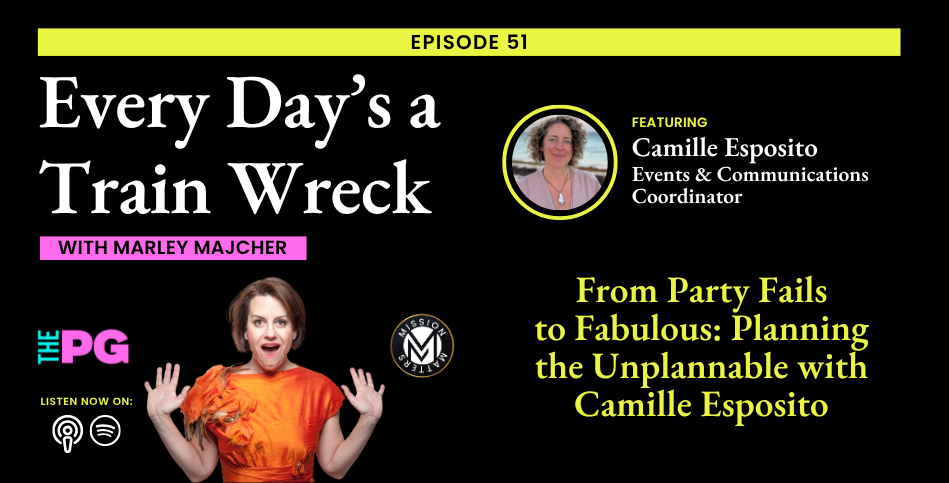5 Low Cost Marketing Tricks
Many entrepreneurs waste time and money on promotions that don’t generate sales, like local ads or social media campaigns aimed more at boosting their egos than driving revenue. Instead, small business owners should focus on building relationships with other local businesses, major employers, schools, and organizations. Networking and cross-promotions can create meaningful connections and mutually beneficial events. Simple strategies like handing out business cards with special offers, cross-promoting with local merchants, offering VIP cards to local employees, using bounce-back promotions, and creatively supporting fundraisers can be cost-effective ways to grow your customer base without breaking the bank. These tactics not only bring in new business but also increase long-term customer loyalty.

Over the years I've found that most entrepreneurs spend too much time and money on promotions that don’t generate new business.
Whether it is local sports sponsorships, newspaper-ad buys or social media, they waste money on marketing strategies that may boost their egos by making them local celebrities, but don’t actually translate into sales.
Entrepreneurs, especially those relying on customers in their local areas, should first focus on networking with other area businesses, major employers, schools, churches and other organizations. They should network and then create marketing strategies and events that are beneficial to all parties.
Here are some marketing ideas to consider before breaking out the big bucks:
1. Hand shake and business card. There is this amazing new social networking tool that’s become popular lately: a radical concept called meeting people in person. Whether you’re a business owner or the general manager, make a point to introduce yourself to at least five people every week. You might be pumping gas or going to the grocery, but say something like: “I’m John Doe, the general manager of John’s Bistro down the street. Just wanted to introduce myself. Have you tried us out yet?” If they haven’t, pull out a business card, write a special freebie offer on the back, and sign and date it. Out of the 250 people you might meet over the year, odds are 185 will use your business-card coupon, and about 50 will become new customers. That’s a significant amount of new business with no advertising cost.
2. Cross promote with other local merchants. It is time for you and your peers to scratch each other’s backs. Provide a special certificate for other local businesses to pass out to customers with a special offer from you -- compliments of them. You get your advertising handed out for free, and the promotional partner gets to offer their customers a perk.
3. Make local employees your VIPs. Got a major employer near your business? Offering a discount to workers who show their name badge seems like a good idea, but often doesn’t work because only those who are already customers take advantage of it. It’s better to persuade the employer to distribute a “VIP card” from your business to each of their workers. Most of them will stick your card into their wallets or purses, and then decide it might be worth it to give you a try. Generally, you should offer something repeatedly for a set period of time to the VIPs -- 30 to 60 days is a good time period. A restaurant might offer a percent discount or free desert. A photo shop might price 5x7" photos as 4x6" photos. Keep the offer lower than you generally would with merchant cross promotions.
4. Get some bounce-back action. Ever have special circumstances in which you provide products or services to a group of people who normally aren’t your customers? Maybe you own a restaurant that also caters events. Maybe you own a T-shirt shop, and a big local employer asks you for 200 shirts for a summer picnic. Each of these people you’re providing products or services to could also become individual customers. So besides catering a retirement party, provide each of the 420 guests with certificates offering them each a $15 discount on their next meal. Chances are good that 150 of those 420 certificates will be redeemed and a third of those 150 will be first-time buyers. You might get an average meal ticket of $31. So you still made some revenue and got a chance to impress 50 customers who might turn into regulars. Let’s just say a regular customer provides $1,500 in annual revenue. You might increase your revenue by $75,000 from the promotion.
5. Support fundraisers -- creatively. One client who owned a restaurant once was approached by a local charity for a gift card for their silent auction. My company found out that the nonprofit expected 400 people to attend the event. So we created special certificates for the restaurant that were handed out to each person that showed up. Each certificate promised a $5 donation to the charity, as long as the certificate holder spent at least $10 at the restaurant. The restaurant received 135 redemptions, and 45 were first-time buyers. The charity raised an extra $710, and the restaurant got a shot at winning a dozen or so new regulars worth about $1,800 a year in sales. The restaurant not only achieved exposure and goodwill, but more importantly got new people in the front door spending money
These strategies don’t take up much time. They cost little. But they generate business. They use a business’s own product as the incentive to drive people in -- instead of major media dollars.
Even though there is some cost in products or services given away, the risk is small because people actually have to show up and buy something to achieve the savings. And once they see how great the businesses products or services are, they came back again and again.
For more go to: entrepreneur.com



